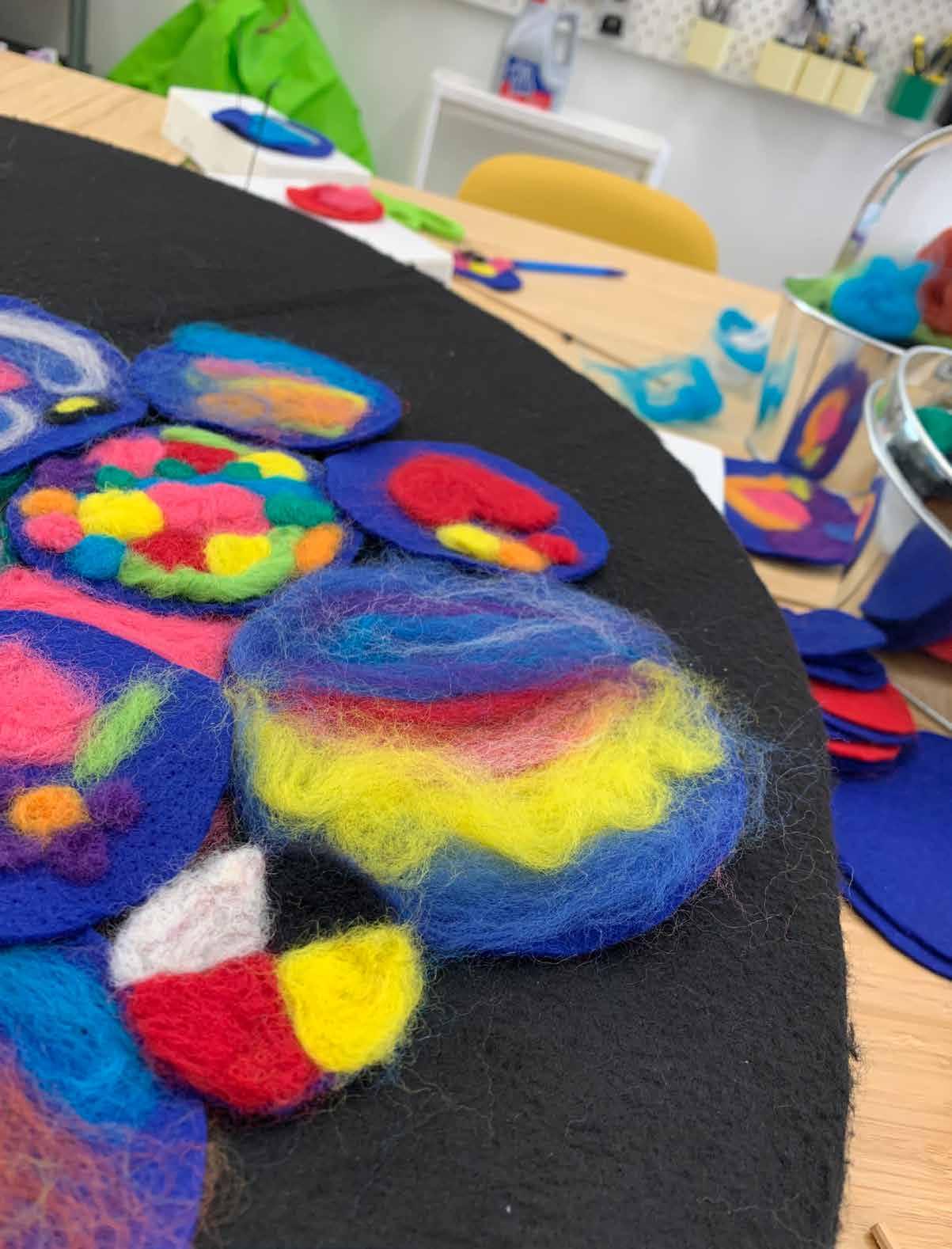
4 minute read
Building Participation Culture
Above all, the work to build participation culture centers on shifting mindsets and practice from service-oriented models, towards participatory and person-centered approaches that work to build collective agency and ownership. This requires a deeper lens and purpose when thinking about the ways in which we draw upon the unique gifts and talents of residents, and nurture new connections between people and across projects. Counter to familiar service delivery models, the approach centers on getting to know the likes and preferences of unique individuals, and finding ways to connect them with others based on shared interests and mutually beneficial project ideas. In the work to date, this nuanced way of working has surfaced important insights into the nature of how residents feel about themselves and their role in the neighbourhood.
Communicating & Connecting with Residents
Finding effective ways to describe the platform and its potential benefits for people and the neighbourhood has proven to be a challenging task for all. This is particularly true at such an early phase, where an established network of residents and projects has not yet been built. While it is recognized that this will take time to demonstrate, it requires on-going practice to illustrate and describe foundational concepts such as co-design with residents, ecosystem building, and embedding principles of Truth & Reconciliation.
“People still think they need permission, but are slowly learning that they are free to come in and help themselves.” –Neighbourhood Project Designer
Stimulating Participation & Co-Creation
Observations from the neighbourhood team have indicated that while many residents feel an immediate sense of comfort and safety within the Neighbourhood Shop, there is still much hesitation around initiating participation projects and sharing or acting upon new ideas to shape the neighborhood. This reflects the personal nature of a residents’ journey and calls for a greater emphasis to be placed on experimenting with new and varied ways to stimulate and invite different forms of participation.
“The hope is that people will learn that it’s better to do things together. To realize the power in numbers and get in the mindset that transcends individual crisis.” –Tim Warin, Participatory City Tutor
Cultivating Specialized Support for Skills Development & Training
While an essential function of the platform is to create the conditions for residents to share knowledge and skills, the initial phase of development has illuminated an opportunity to cultivate a network of local people and/or organizations with specialized skills, to support the initiation and growth of new projects. To date, desired skills that have emerged in conversations with residents relate to different forms of art, building, woodworking, coding, 3-D printing, and podcasting.
Integrating Decolonized Practice
Integrating decolonized practice across structural and programmatic elements of the platform requires more than just incorporating Indigenous worldview and protocols; It demands a deeper look into the systems we are connected to and an examination of our own individual mindsets. To begin this process, the team participated in sharing circles and conversation with Elders and Knowledge Keepers connected to the Mi’kmaw Native Friendship Centre. This provided insights into the ways in which Every One Every Day could contribute to, and incorporate decolonized learning and practice into our work. In particular it helped us to realize that we are all starting this journey from different places of awareness of the history and culture of Indigenous nations and the impact of colonization.
“Decolonized practice” refers to the ways in which we choose to examine and undo colonizing processes that are woven into our social fabric and institutions, and hold up structures of discrimination, oppression, and power imbalances. Examples of decolonized practices could be centering marginalized voices, recognizing Indigenous sovereignty, and sharing power.
One of the on-going stimulation projects at the Shop is our Community Wool Art project. Here, residents can come in to the Shop and work away, while starting new conversation with others in the community, or brainstorming new ideas to co-design with our Neighbourhood Project Designers.
Insights and Areas for Growth:
• Practicing new ways to describe what the platform is and creating interactive tools that help to illustrate the potential benefits of participating.
• Bringing participatory experiences out into public spaces and finding exciting ways to capture resident interest and creativity around larger scale projects that build connections across the neighbourhood.
• Activating the power of stimulation within the shop to invite new ideas, spark creativity, and imagine beyond what already exists.
• Cultivating an internal work-style that is creative, generative, and collaborative—harnessing co-production skills that mirror the ways in which residents can work together to design and activate new ideas in the neighbourhood.
• Leveraging local partnerships that help to embed specialized knowledge and skills into the platform as it grows.
• Exploring the potential for “trainers in residence” that could be called upon to support the development of specialized skills as required to initiate or grow projects.










